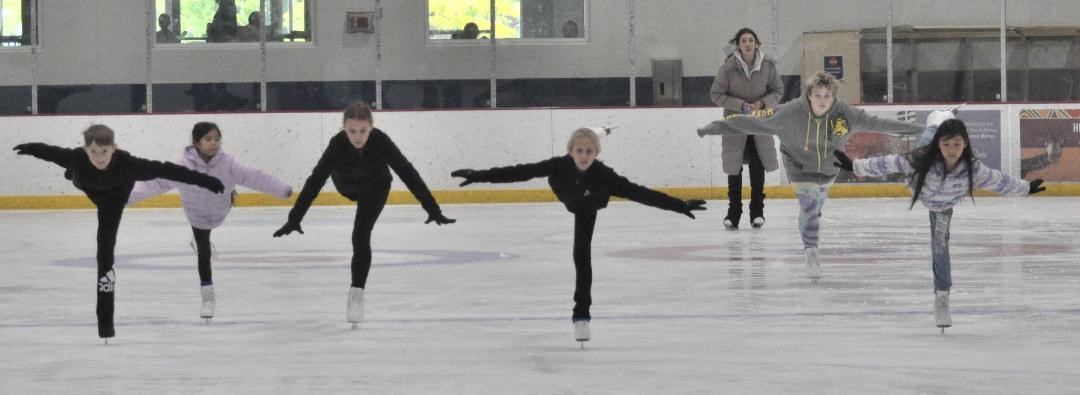Above: Students and coaches from the Boise Figure Skating Club’s Learn to Test and Learn to Dance programs are excited about the new opportunities.
By Joan Vassallo Yamrosch
The thought of testing can be intimidating for many skaters, especially at the lower levels.
However, the Boise Figure Skating Club in Boise, Idaho has found a perfect solution that introduces the basics of testing, is fun, and promotes camaraderie among skaters.

“One of our coaches was looking for more ways to get skaters to try out their first level of skating skills, and she realized that those same skaters might appreciate having quiet ice to learn new skills without feeling intimidated by a busy free session style,” club secretary Carrie Eggert said.
As the idea took shape, the club realized that others might appreciate being introduced to another new discipline, such as ice dancing.
And so began the club’s new Learn to Test and Learn to Dance classes.
“The club board saw an opportunity to use an extra hour of ice time on Saturday,” Eggert said. “They then advertised with messages on social media websites and emails to club members. In these messages, we used quotes from fellow coaches about what important skating skills these classes can teach them.”
Classes are held once a week for one hour and are held simultaneously on the same ice sheet. Coach Bianca Chall teaches the Learn to Test class while Coach Cadence Brunslick leads the Learn to Dance class.
During each week of the Learn to Test class, skaters work on learning each pattern in the Pre-Skating Skills Test, putting them into action and perfecting their skating technique. During each week of Learn to Dance, skaters refine techniques for each element of the dance step, perform drills to practice timing, and learn Canasta Tango steps.
“In week six, we assess who we think is ready to test, and then, in week nine, we wrap up the class by recording those who are ready for a virtual test session,” Eggert said.
Brunzlik and Chall have noticed increased motivation in participating skaters.
“I love seeing these skaters continue to work on these skills even outside of our classroom hours,” Chall said.
Brunzlick likes to see skaters start branching out into other disciplines they may not have known about before.

“Seeing their motivation to learn something completely new to them is refreshing and continues to motivate me to continue teaching,” Brunzlik said.
Eggert notes how important it is for skaters to be interested in testing themselves, whether in skating skills or ice dancing.
“It’s necessary to continue to move to higher levels of competition and continue to challenge the skaters as they continue to improve,” Eggert said. “Interest in tests and ice dancing has definitely increased. It creates camaraderie, motivation to practice and exposure to different skating disciplines.”
The overall response to the classes has been positive, both from skaters in the classes and parents.
“We’ve noticed that some of the more shy skaters are starting to make friends with others in their class and have started practicing skating skills and dancing together in free sessions,” Eggert said. “As classes continued, we had increased interest in classes continuing into the next session,”
She encourages other clubs to consider offering classes like these.
“It was a great way to introduce skaters to different opportunities within the sport and start to develop a path forward,” Eggert said. “It’s also become a great way for shy skaters to make friends in an otherwise individual sport, creating a more open community of support for one another.”

